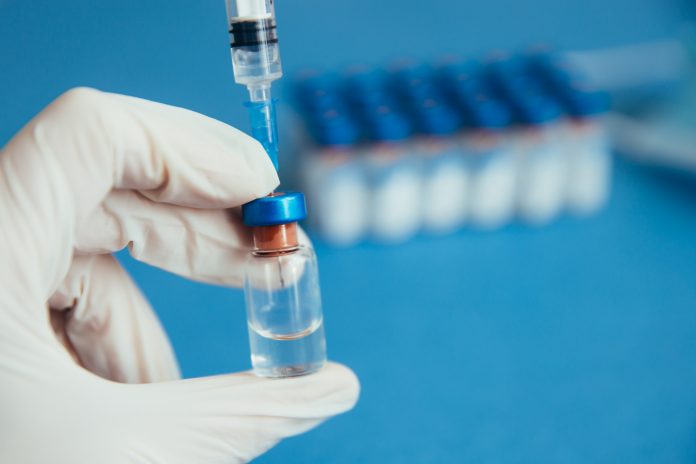Dr Babita Agrawal, Professor at the University of Alberta, discusses both the vital present and future roles of vaccines and immunotherapeutics in combatting COVID-19
In March 2020, when the World Health Organization (WHO) declared the pandemic of COVID-19, caused by severe acute respiratory syndrome coronavirus 2 (SARS-CoV-2), the news was received with much fear, shock, and an unprecedented lockdown worldwide. Even more worrisome is the continuing emergence of pathogenic and more infectious SARS-CoV-2 variants and their spread across the globe in 2021. Strict social and societal measures can interrupt the efficient transmission of SARS-CoV-2 among the human population in the immediate time frame. But the most successful fight against this micro-enemy can only be won from within us, through the immune system. Exploiting the various aspects of the immune system, through vaccines and immunotherapeutics, is our best hope to block the efficient circulation of the virus through susceptible human hosts and for us to emerge from the pandemic. The heterogeneous course of SARS-CoV-2 infections, i.e., asymptomatic, mild to moderate cold and fever, gastrointestinal symptoms, loss of smell and taste, neurological symptoms, strokes, and severe pneumonia and death, provide a snapshot of not only the pathological consequences of the infection, but also of the immune responses generated against the infection in a diverse human population.
A complex and multi-factorial shaping of the diverse human immune system
In a genetically diverse human population, it is the environment that is one of the most determining factors in the overall shaping of the immune system at the individual level. The immune system is complex, composed of numerous cells, soluble and membrane-bound factors that evolve and transform over a lifetime influenced by external factors such as diet, exposure to pathogens/infections, hygiene practice, antibiotic treatment, vaccination history, and microbiota. A classic example of the dominant influence of environmental factors on the human immune system is the discordant development of autoimmune diseases in genetically identical twins carrying disease-susceptibility genetic signatures.(1) Similarly, cytomegalovirus infection and influenza vaccinations both have been reported to result in immunity largely independent of the genetic factors in the adult human population.(2) These studies highlight the inherent complexity in determining a causal genetic relationship to variable mild-to-severe courses of COVID-19 infection.(3) Furthermore, these observations also suggest the intricate nature of host factors that shape the heterogeneous course of infection with SARS-CoV-2.
Natural and acquired innate and adaptive immunity define protection or pathology from infection
Our immune system is composed of two highly interactive innate and adaptive components. The innate system provides an immediate, non-specific and non-adaptive response to invading pathogens; the adaptive system takes time to develop but provides a highly-specific and memory response against invading pathogens. The initial characteristics of immune responses induced in immunologically-naïve individuals, such as newborns, are generally defined by their genetic makeup. As the immune system matures, with exposure to a variety of environmental factors during the lifetime of a person, both innate and adaptive immune cells acquire defining characteristics. Of particular importance are features of trained innate immunity and heterologous adaptive immunity. These features extend far beyond the basic principles of innate and adaptive immunity and contribute as important mechanisms in efficient clearance of a pathogen upon natural infection or through vaccine-induced immunity.(4) Epidemiological evidence demonstrates that routine childhood vaccinations with BCG, measles, DTP, vaccinia, etc. lead to non-specific protection against many other unrelated infections as well as incidences of allergic diseases and autoimmune diseases.(5) Exposure to certain microbial vaccines such as BCG may lead to functional imprinting in myeloid cells through epigenetic changes as trained innate immunity, which can provide long-lasting effects against unrelated pathogens.(6) Innate lymphocytes such as natural killer (NK) cells on the other hand have been shown to retain a memory of prior exposure to pathogenic insults in the body, further contributing to trained innate immunity.(7) Components of adaptive immune responses i.e., antibodies and T cells, demonstrate inherent degeneracy and cross-reactivity in antigen recognition leading to heterologous immunity.(4)
For example, our recent studies have demonstrated robust cross-reactive cellular and humoral immunity between human adenovirus and hepatitis C virus.(8) With respect to COVID-19 immunity and pathogenesis, childhood BCG vaccination has been suggested to inversely correlate with severe infection with SARS-CoV-2, and several clinical trials are underway to address whether BCG vaccination may help prevent COVID-19.(6) Interestingly, SARS-CoV-2 cross-reactive T cells have been shown to exist in 81% of the unexposed individuals. And among the COVID-19 patients, the majority with severe disease course demonstrated lower cross-reactive T cell frequency compared to the ones with a mild disease course.(9) However, the source and the role of cross-reactive T cells in SARS-CoV-2 immunopathogenesis vs. clearance need to be clearly established.
Future prospects of immunotherapeutics and vaccines
Since December 2020, with the emergency use listing of the first generation of vaccines against COVID-19, the world has seen a glimmer of hope in containing the current pandemic and returning to normalcy.(10) With the vaccination drive, the race between the viral variants and vaccines has also started, and the second and third waves of infections are occurring worldwide. How much the current COVID-19 vaccines and which platforms protect against variants of COVID-19 remains to be established. The unprecedented speed at which SARS-CoV-2 vaccines have been brought forward for mass vaccination is truly an accomplishment for the scientists, pharma, and governments across the globe.
However, is it the endgame or the beginning of the endgame for the COVID-19 pandemic? All the current COVID-19 vaccines appear to prevent pathological consequences of SARS-CoV-2 infections and not the infection per se, and the durability of protection is not yet clear. This is consequential with respect to their limited ability in blocking the transmission of SARS-CoV-2 among humans and possibly ending the pandemic. SARS-CoV-2 is primarily a respiratory infection, transmits mostly through aerosol or respiratory droplets, and enters a host via the nasal and oral mucosa. Therefore, it seems most reasonable to continue our quest in investigating mucosal vaccines and immunotherapeutics which will not only provide specific adaptive immunity, including T cell and antibody responses against variant strains of SARS-CoV-2 within the mucosal tissues, but also attack the foe with innate (and trained innate) immunity and/or heterologous adaptive immunity.
Acknowledgements: The author wishes to acknowledge the vast array of the published scientific literature, not referred here. BA gratefully acknowledges research grant funding from the Canadian Institutes of Health Research (CIHR).
References:
- doi: 10.1007/s00018-016-2311-1.
- https://doi.org/10.1016/j.cell.2014.12.020
- https://doi.org/10.1093/pcmedi/pbaa026
- doi: 10.3389/fimmu.2019.02631
- doi: 10.1080/14760584.2017.1333906.
- doi: 10.1056/NEJMcibr2011679
- https://doi.org/10.1038/s41590-018-0176-1
- https://doi.org/10.3390/ijms18081626; https://doi.org/10.3390/cells8050507.
- https://doi.org/10.1038/s41590-020-00808-x
- https://www.who.int/emergencies/diseases/novel-coronavirus-2019/covid-19-vaccines
Please note: This is a commercial profile
© 2019. This work is licensed under CC-BY-NC-ND.











